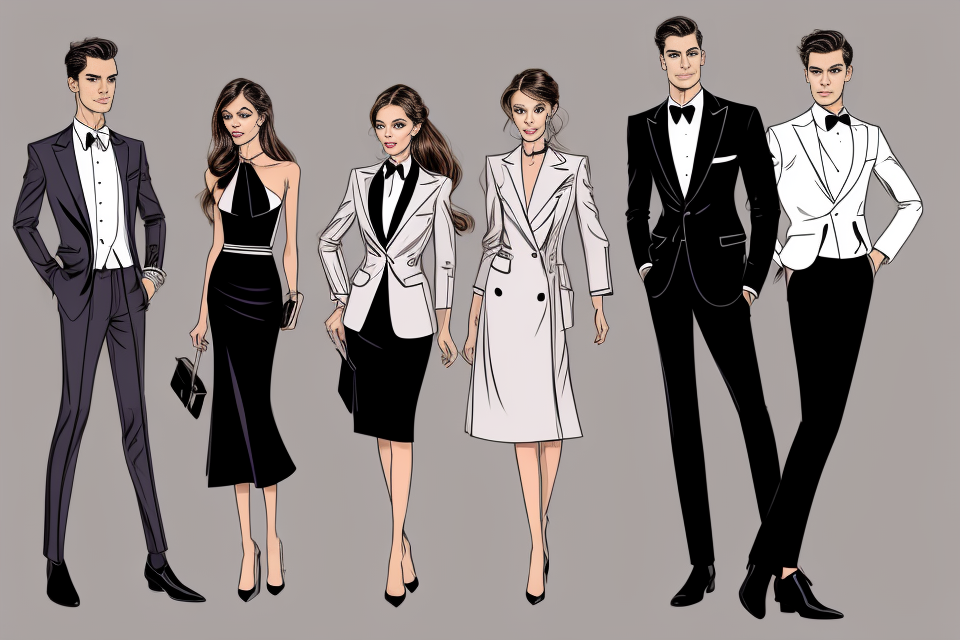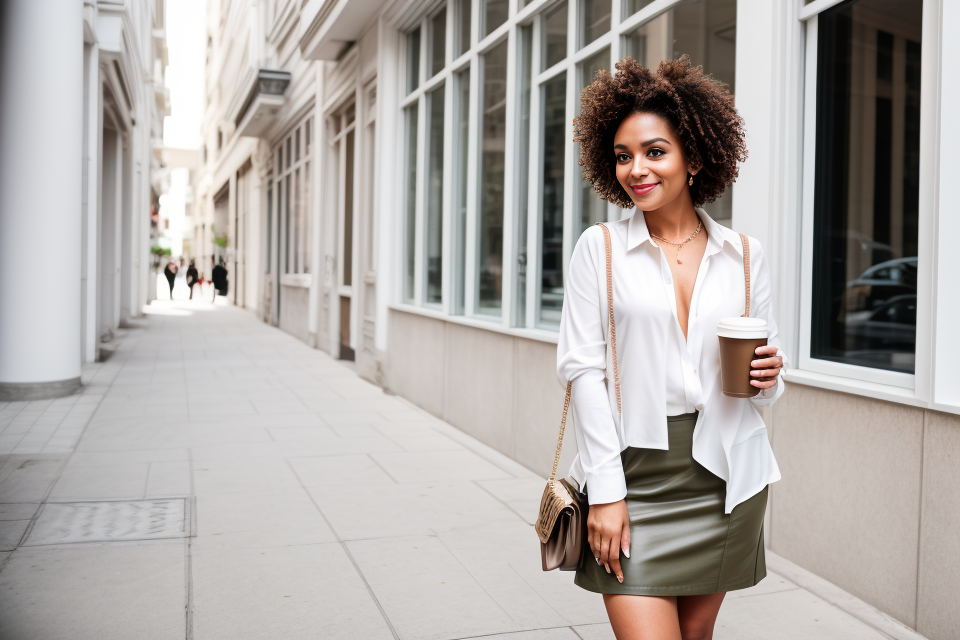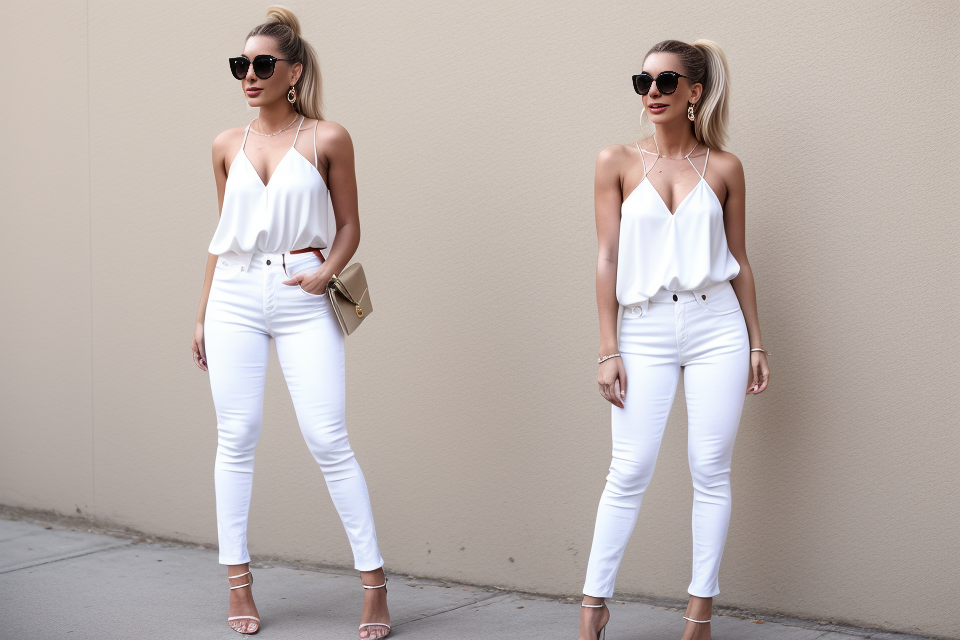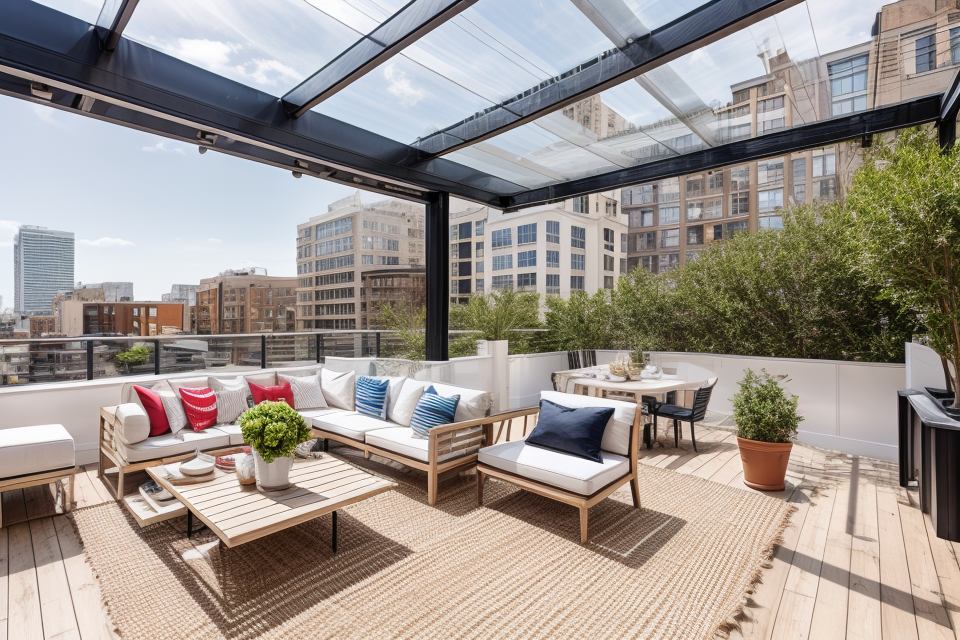
Dressing appropriately for different occasions is not just about looking good, it’s also about showing respect for the occasion and the people involved. Whether it’s a formal business meeting, a casual dinner with friends, or a wedding, the way we dress sends a message about our level of respect and consideration for the occasion. In this article, we’ll explore why it’s important to dress appropriately for different occasions and how it can impact our overall image and success. From enhancing our confidence to making a positive first impression, the power of dressing appropriately cannot be overstated. So, let’s dive in and explore the importance of dressing for success.
Dressing appropriately for different occasions is important because it shows respect for the occasion and the people involved. It also helps to convey a professional or formal atmosphere, and can impact how others perceive you. In some cases, dress codes are required to maintain a certain level of decorum or to adhere to industry standards. Additionally, dressing appropriately can also impact your own comfort and confidence, as well as your ability to perform certain tasks. Overall, dressing appropriately is a sign of respect, professionalism, and good judgment.
Understanding the significance of occasion-specific dressing
The role of dressing in expressing respect and professionalism
When it comes to dressing appropriately for different occasions, it is important to consider the role that clothing plays in expressing respect and professionalism. The way we dress can communicate a lot about our level of preparation and commitment, and it can also impact our personal and professional image.
Here are some key points to consider when it comes to the role of dressing in expressing respect and professionalism:
- Dressing for success: The way we dress can have a significant impact on how we are perceived by others. When we dress professionally, we send a message that we are serious about our work and committed to achieving our goals. This can help us to build credibility and establish ourselves as reliable, trustworthy individuals.
- Showing respect: In many professional settings, it is important to show respect for others through our dress. This might mean avoiding casual or revealing clothing, and instead opting for more formal attire that is appropriate for the setting. By dressing respectfully, we demonstrate our appreciation for the people we are interacting with and the context in which we are working.
- Creating a positive image: The way we dress can also impact the way we are perceived by others. When we take the time to dress appropriately for an occasion, we send a message that we care about our appearance and are invested in creating a positive image. This can help us to build confidence and feel more comfortable in social and professional settings.
- Setting expectations: Finally, the way we dress can also help to set expectations for others. When we dress professionally, we signal to others that they should also take the occasion seriously and dress appropriately. This can help to create a more positive and productive environment for everyone involved.
Overall, the role of dressing in expressing respect and professionalism is an important one. By taking the time to dress appropriately for different occasions, we can communicate our level of preparation and commitment, show respect for others, create a positive image, and set expectations for those around us.
The influence of cultural and social norms on dress codes
Dress codes are often influenced by cultural and social norms, which vary from one society to another. These norms can dictate what is considered appropriate attire for different occasions, such as weddings, funerals, and formal events.
In many cultures, there are specific traditions and customs associated with dress codes, which are meant to convey respect, modesty, and cultural identity. For example, in some traditional African societies, colorful clothing is worn to celebrate important events, while in other cultures, more subdued colors and patterns are preferred.
Moreover, social norms also play a significant role in determining what is considered appropriate attire in different settings, such as workplaces, schools, and religious institutions. These norms can vary significantly depending on the specific industry, profession, or religion, and may be influenced by factors such as organizational culture, regional customs, and historical traditions.
Therefore, it is essential to be aware of the cultural and social norms associated with different occasions and settings when choosing attire. Failure to do so can result in inappropriate or offensive attire, which can negatively impact one’s personal and professional image.
Dressing for success: The benefits of appropriate attire
Enhancing personal and professional credibility
Appropriate attire plays a significant role in establishing one’s credibility, both personally and professionally. It is crucial to understand that how one dresses can impact how others perceive them. The following points elaborate on how dressing for the occasion can positively impact perception and performance.
- The role of appearance in establishing trust and authority
Research has shown that the way a person dresses can affect how much trust and authority they are perceived to have. People tend to trust those who present themselves in a professional manner. This means that the way one dresses can have a direct impact on their credibility and the level of trust others have in them. For instance, a business meeting is a professional setting, and dressing appropriately can convey a sense of competence and reliability, leading to better outcomes.
- How dressing for the occasion can positively impact perception and performance
The way one dresses can influence how they feel about themselves and their level of confidence. Dressing appropriately for an occasion can help one feel more confident and prepared, leading to better performance. Additionally, it can also impact how others perceive them. When one dresses for the occasion, they are more likely to be taken seriously and considered as a valuable contributor. This, in turn, can lead to better opportunities and increased success.
Overall, dressing appropriately for different occasions is essential in enhancing personal and professional credibility. It can impact how one is perceived by others and influence their level of confidence, leading to better outcomes and increased success.
Projecting confidence and self-assurance
The way we dress can have a significant impact on our psychological state and behavior. When we dress for a particular occasion, we send a message to our subconscious mind about the role we are playing and the expectations we have for ourselves. This, in turn, can affect our body language, nonverbal communication, and ultimately, our level of confidence and self-assurance.
For example, when we dress for a job interview, we are signaling to our mind that we are taking the interview seriously and are prepared to present ourselves in a professional manner. This can help us feel more confident and prepared, leading to better communication and a stronger chance of success. On the other hand, if we show up to a job interview in casual attire, we may feel less prepared and less confident, which can negatively impact our performance.
Additionally, the way we dress can affect how others perceive us. When we dress appropriately for an occasion, we are more likely to be taken seriously and to be taken more seriously by others. This can help us establish credibility and build trust with those we interact with. Conversely, if we dress inappropriately, we may be seen as unprofessional or not taking the occasion seriously, which can harm our reputation and credibility.
In conclusion, dressing appropriately for different occasions can have a significant impact on our psychological state, behavior, and the way others perceive us. By dressing for success, we can project confidence and self-assurance, which can ultimately lead to greater success and satisfaction in both our personal and professional lives.
Making a good impression: Tips for dressing appropriately
Researching the dress code and venue
The importance of gathering information about the event or setting
Prior to attending an event or entering a specific setting, it is crucial to gather as much information as possible about the dress code and the venue. This can include researching the event’s website, social media pages, or even contacting the event organizers directly to obtain more detailed information about the attire expectations. By doing so, one can ensure that they have a clear understanding of the appropriate dress code for the occasion, which can help avoid any potential discomfort or embarrassment.
Identifying the key elements of the dress code and adhering to them
Once the necessary information has been gathered, it is important to identify the key elements of the dress code and adhere to them accordingly. This may involve paying close attention to specific details such as the color, style, and material of clothing, as well as any accessories or additional pieces that may be required. By following the dress code guidelines, one can ensure that they are dressed appropriately for the occasion and are making a positive impression on those around them.
Building a versatile wardrobe
Creating a versatile wardrobe is key to dressing appropriately for different occasions. This can be achieved by investing in classic, timeless pieces that can be adapted to various events. Some examples of versatile items include neutral-colored tops, tailored trousers, and structured blazers. These pieces can be paired with different accessories to create a variety of outfits suitable for different occasions.
Another important aspect of building a versatile wardrobe is learning how to accessorize effectively. Accessories can enhance and complement outfits, adding a touch of personality and style. For example, a simple white shirt can be transformed into a chic outfit with the addition of a statement necklace and a pair of high-heeled sandals. Similarly, a classic pair of jeans can be dressed up for a night out by adding a bold statement earring and a clutch.
It is also important to consider the occasion and the dress code when selecting accessories. For example, a formal event may require more understated accessories, such as a simple bracelet and a pair of stud earrings, while a casual gathering may allow for more playful and expressive accessories, such as a colorful scarf and a statement ring.
In conclusion, building a versatile wardrobe is essential for dressing appropriately for different occasions. By investing in classic, timeless pieces and learning how to accessorize effectively, individuals can create a variety of outfits that are suitable for different events.
Putting together a cohesive look
Dressing appropriately for different occasions is not only about following the dress code, but also about putting together a cohesive look that is both practical and stylish. Here are some tips to help you achieve this:
- Start with a clear understanding of the occasion: Before you start choosing your outfit, it’s important to understand the context of the occasion. Consider the dress code, the time of day, the venue, and the purpose of the event. This will help you make informed decisions about the colors, fabrics, and styles that are appropriate.
- Coordinate your colors: Color coordination is key to putting together a cohesive look. Choose colors that complement each other and avoid clashing or contrasting colors that can be jarring to the eye. Consider the color of the event venue and choose colors that will not be lost in the background.
- Mix and match patterns and textures: Mixing and matching patterns and textures can add visual interest to your outfit and create a cohesive look. However, it’s important to balance the different elements to avoid an overwhelming or chaotic look. Stick to a limited palette of colors and patterns to avoid overwhelming the eye.
- Pay attention to the fit: A well-fitting outfit is essential to creating a cohesive look. Clothes that fit well will not only look better, but they will also be more comfortable to wear. Make sure to get items tailored if necessary to ensure a perfect fit.
- Accessorize wisely: Accessorizing can help tie an outfit together and add visual interest. Choose accessories that complement your outfit and enhance your overall look. Avoid over-accessorizing, as this can detract from the cohesiveness of your outfit.
By following these tips, you can put together a cohesive look that is both practical and stylish, and make a good impression at any occasion.
Dressing for specific occasions: Examples and advice
Formal events and business settings
When it comes to formal events and business settings, the way you dress can make a significant impact on how you are perceived by others. Here are some guidelines to help you choose the appropriate attire for weddings, galas, and other formal events, as well as for work and business meetings.
- Choosing appropriate attire for weddings, galas, and other formal events
- Dress codes for formal events: Understanding the dress code is essential to ensure that you are dressed appropriately. Common dress codes for formal events include black tie, cocktail attire, and formal.
- Colors and patterns: Solid colors are generally the safest choice for formal events, but patterns such as polka dots and pinstripes can also be appropriate depending on the event and occasion.
- Accessories: Accessories such as jewelry, shoes, and handbags should be simple and understated. Avoid wearing too much jewelry or brightly colored accessories that may distract from your overall appearance.
- Dressing professionally for work and business meetings
- Business casual vs. professional attire: Understanding the dress code for your workplace is essential to ensure that you are dressed appropriately. Some workplaces may have a business casual dress code, while others may require professional attire.
- Colors and patterns: Solid colors are generally the safest choice for professional attire, but patterns such as small checks and stripes can also be appropriate.
- Appropriate clothing for different professions: Different professions may have different dress code requirements. For example, a lawyer may wear a suit and tie, while a doctor may wear a lab coat. It is essential to understand the dress code requirements for your profession to ensure that you are dressed appropriately.
Casual and everyday occasions
Dressing appropriately for casual and everyday occasions is crucial as it allows you to blend in with your surroundings and project a professional image. The following are some tips on how to navigate the nuances of casual dress codes and dress comfortably and appropriately for everyday activities.
- Understanding casual dress codes:
- Casual dress codes are often less restrictive than formal dress codes, but it’s important to understand the specific guidelines of the occasion.
- For example, some casual events may allow jeans and a nice top, while others may require a more polished look.
- To ensure you’re dressed appropriately, it’s important to research the dress code of the event or venue beforehand.
- Dressing comfortably and appropriately for everyday activities:
- Comfort is key when it comes to everyday dressing, but it’s important to still maintain a level of professionalism.
- A good rule of thumb is to dress one level below the formality of the occasion.
- For example, if you’re meeting a client for lunch at a casual restaurant, a nice blouse and dress pants would be appropriate.
- It’s also important to consider the activities you’ll be participating in and dress accordingly.
- If you’re attending a outdoor event, it’s best to opt for breathable fabrics and comfortable shoes.
- If you’re attending a meeting or presentation, it’s important to dress professionally and avoid wearing anything too casual or revealing.
In conclusion, dressing appropriately for casual and everyday occasions is essential to projecting a professional image and fitting in with your surroundings. By understanding the dress code and dressing comfortably and appropriately, you can ensure that you make a positive impression and feel confident in your attire.
Special occasions and celebrations
Dressing appropriately for special occasions and celebrations is essential to show respect for the occasion and to adhere to cultural and religious traditions. Understanding the dress codes for these events can help ensure that you are dressed in a way that is appropriate and respectful.
For religious ceremonies, it is important to dress in attire that is modest and conservative. This may include wearing long sleeves, high necklines, and skirts or dresses that fall below the knee. Men may be required to wear suits or formal wear, such as a kurta or sherwani. It is also important to avoid wearing any clothing or accessories that may be considered offensive or inappropriate for the occasion.
For cultural events, such as weddings or festivals, it is important to understand the cultural norms and traditions of the event. This may include wearing traditional clothing or accessories, such as a sari or lehenga for a traditional Indian wedding. It is also important to consider the occasion and the formality of the event when choosing what to wear.
When attending festive celebrations, such as a New Year’s Eve party or a holiday gathering, it is important to dress in a way that is festive and celebratory. This may include wearing bright colors, sequins, or other embellishments. It is also important to avoid wearing anything that may be considered too casual or informal for the occasion.
Incorporating traditional and symbolic elements into outfits can add meaning and significance to the occasion. For example, wearing a family heirloom or a piece of jewelry with cultural significance can be a meaningful way to honor tradition and show respect for the occasion.
Overall, dressing appropriately for special occasions and celebrations is about showing respect for the occasion and the people involved. By understanding the dress codes and cultural norms of the event, and choosing attire that is festive and meaningful, you can help make the occasion a memorable and special one.
FAQs
1. Why is it important to wear clothes suitable for the occasion?
Wearing clothes that are suitable for the occasion is important because it helps you to present yourself in a professional and appropriate manner. Depending on the occasion, certain types of clothing may be more appropriate than others. For example, you might wear a suit to a job interview or a formal dinner, but you would not wear the same clothes to a casual barbecue. Wearing clothes that are suitable for the occasion can help you to make a good impression and show respect for the people you are meeting.
2. What are some occasions where I should dress more formally?
There are many occasions where you may need to dress more formally. Some examples include job interviews, formal dinners, weddings, and religious ceremonies. In these situations, it is important to dress in a way that shows respect for the occasion and the people you are meeting. This might mean wearing a suit or dress, or it might mean following specific dress codes or traditions.
3. What are some occasions where I can dress more casually?
There are also many occasions where you can dress more casually. For example, you might wear casual clothes to a picnic, a beach party, or a casual dinner with friends. In these situations, it is important to choose clothes that are comfortable and appropriate for the activity. You might want to avoid wearing clothes that are too formal or that might be damaged by activity.
4. How can I determine what is appropriate to wear for a particular occasion?
To determine what is appropriate to wear for a particular occasion, you should consider the type of event, the location, and the dress code. If you are unsure, you can always ask someone who has attended the event before or check the event’s website or social media pages for guidance. You should also consider the occasion’s purpose and the people who will be attending. For example, if you are attending a job interview, you might want to wear a suit to show your professionalism and respect for the opportunity.


